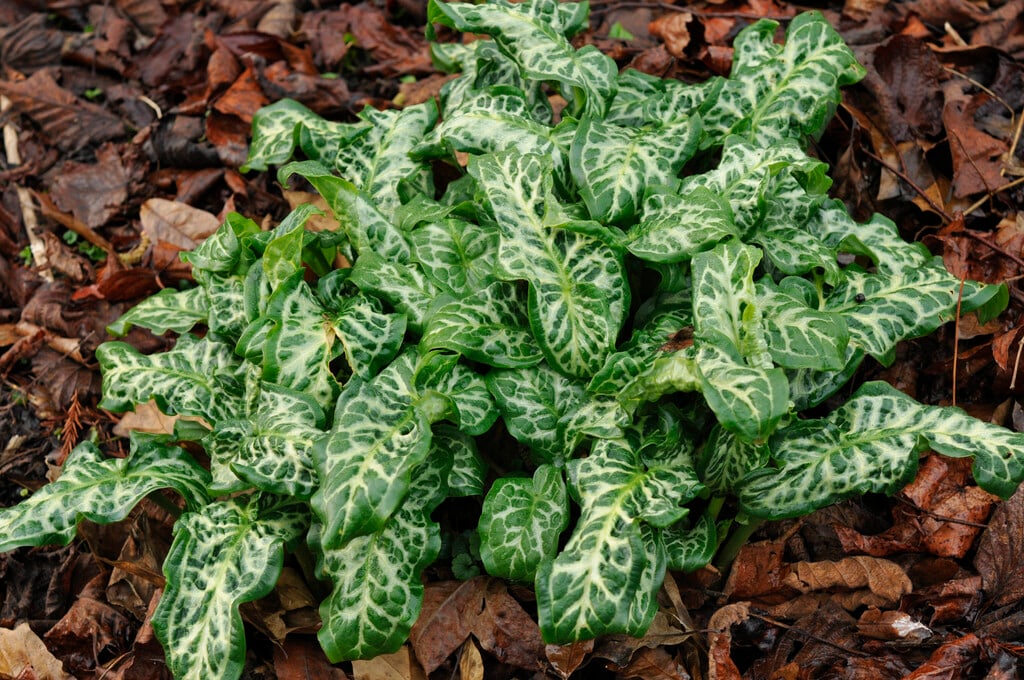Arum italicum subsp. italicum 'Marmoratum'
Italian arum 'Marmoratum'
A tuberous perennial to 35cm, with large, arrow-shaped dark, glossy green leaves veined creamy-white and appearing in autumn. Large greenish-yellow spathes with a yellow spadix are followed by showy spikes of orange-red berries

Buy this plant
Size
Ultimate height
0.1–0.5 metresTime to ultimate height
2–5 yearsUltimate spread
0.1–0.5 metresGrowing conditions
Moisture
Well–drainedpH
Acid, Alkaline, NeutralColour & scent
| Stem | Flower | Foliage | Fruit | |
| Spring | Green White | |||
|---|---|---|---|---|
| Summer | Green Yellow | Green White | ||
| Autumn | Green White | Orange Red | ||
| Winter | Green White |
Position
- Full sun
- Partial shade
Aspect
East–facing or South–facing or North–facing or West–facing
Exposure
Sheltered Hardiness
H6Botanical details
- Family
- Araceae
- Native to GB / Ireland
- No
- Foliage
- Semi evergreen
- Habit
- Columnar upright
- Potentially harmful
- TOXIC if eaten, skin/eye irritant. Wear gloves and other protective equipment when handling TOXIC to pets - see the HTA guide to potentially harmful plants for further information and useful contact numbers
- Genus
Arum are tuberous perennials with simple, arrow-head shaped leaves and tiny flowers hidden, at the base of a yellow or purple, club-shaped spadix, within a showy, hood-like spathe, and followed by red berries
- Name status
Accepted
How to grow
Cultivation
Grow in moist but well-drained humus-rich soil and plant 10 to 15cm deep. Has the potential to become a nuisance if not managed well
Propagation
Division of clumps of tubers should take place after flowering. Alternatively, propagate by seed sown in autumn having removed the fleshy pulp
Suggested planting locations and garden types
- Cottage and informal garden
- Underplanting of roses and shrubs
- Flower borders and beds
Pruning
No pruning required
Pests
Generally pest-free
Diseases
Generally disease-free
Get involved
The Royal Horticultural Society is the UK’s leading gardening charity. We aim to enrich everyone’s life through plants, and make the UK a greener and more beautiful place.